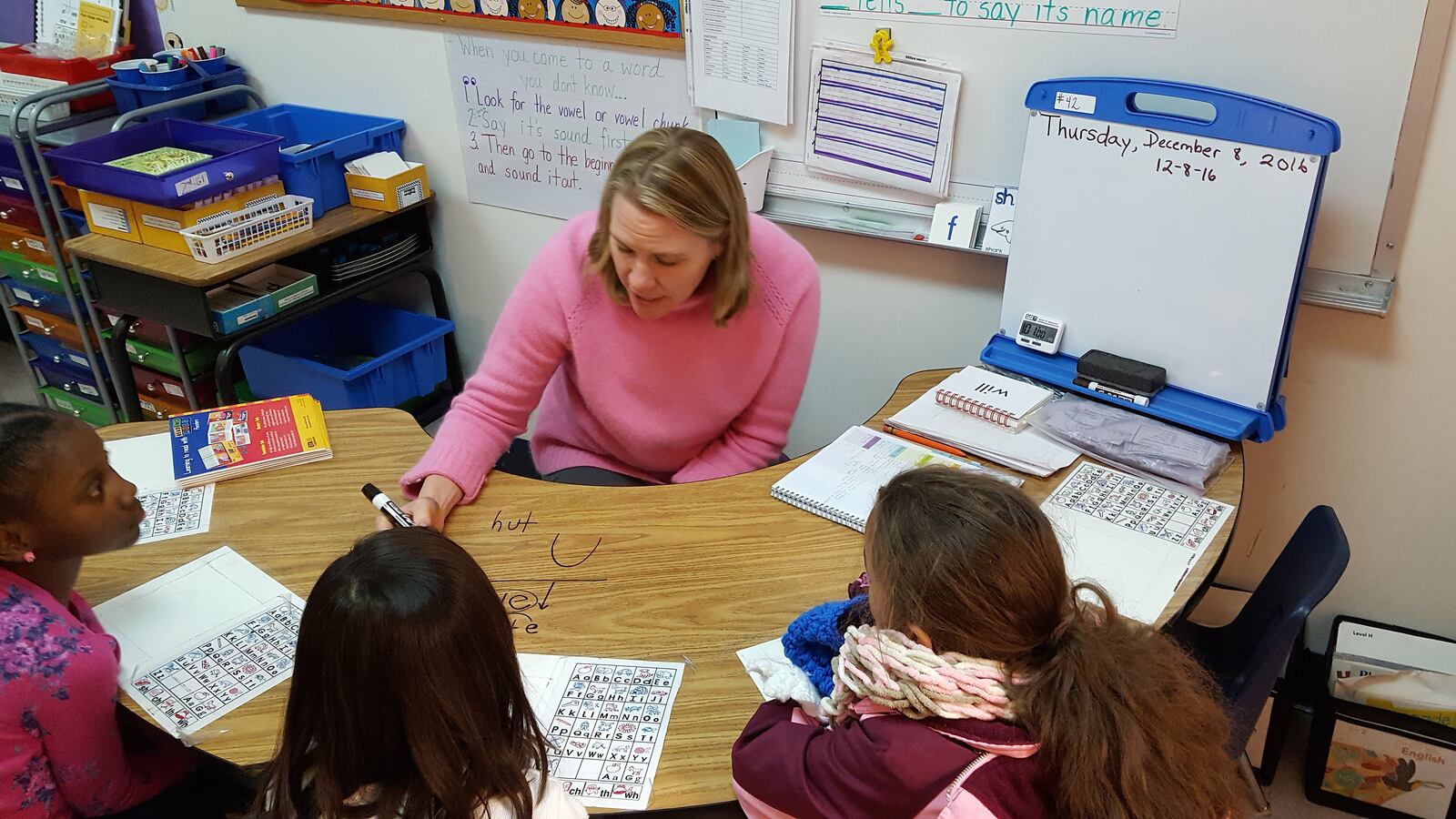How do teachers captivate their students? Here, in a feature we call How I Teach, we ask great educators how they approach their jobs. You can see other pieces in this series here.
As a reading intervention teacher at North Mor Elementary School in the Adams 12 Five Star School district, Rachel Harrison sometimes scraps her lesson plans mid-way through if students aren’t getting it. Such deviations, she says, can feel risky but are critical in heading off achievement gaps. It’s all part of her responsive teaching style.
Harrison is one of 15 teachers selected for the inaugural Colorado Teaching Policy Fellowship operated by the national nonprofit Teach Plus. The nine-month program aims to involve teacher leaders in state-level education policy discussions, including the implementation of the Every Student Succeeds Act.
This interview has been condensed and lightly edited.
What’s your routine like when you arrive at school?
I usually begin my day by re-reading my lesson plans. I rehearse what I am going to say, predict possible misconceptions or errors, plan how I am going to respond and choose which scaffolding techniques I will use. Then, I head out into the second or third grade hallway for breakfast duty and begin the school day by greeting all the students by name and wishing them a good day.
What does your classroom look like?
I am located in a small and cozy kitchenette on the backside of the building. It is filled with varying levels of books, sentence stems, vowel and reading strategy posters. You will often find small groups of four to five students around a small half circle-shaped table. You will hear lots of chaos — reading, feedback exchanged between the student and myself, laughter and, at times, even some tears.
What apps/software/tools can’t you teach without? Why?
I simply cannot live without my student goals graphs. I’ve been using them for years and it’s the biggest motivator for all my students. They absolutely love keeping track of their progress in reading by setting goals, graphing results and planning for the next month.
We have lots of in-depth discussions on how to achieve our goals, what went well in achieving the goal and what we need to do next. The graphs help teach them how to be accountable for their own learning.
How do you plan your lessons?
I always plan with end goal in mind. I start there and then plan backwards. During our lesson, I take a few notes on each student, reflect on what went well and perhaps what needs to be re-taught or we need to work on the next day. I plan from day to day, really keeping in mind what students need, what they must master, how to create a complete picture of where we are going and why.
What qualities make an ideal lesson?
You have to specifically target your lesson for each day, while keeping the short- and long-term goals of the standards in mind. You must plan for possible errors that students may make and how to respond when they occur. Planning for these has changed my teaching and really helped me to be responsive with all my students.
How do you respond when a student doesn’t understand your lesson?
I ask questions until I understand what the student needs. I’ve completely scrapped a lesson when the feedback from students tells me we may need to go back or I have started a new lesson when students demonstrate that they “got it.” Recently, I was observed by my principal doing this very thing. She told me she appreciated how responsive I was to the needs of students by quickly adapting instead of continuing with the lesson when it was clear they were completely lost.
Sometimes, as teachers, we continue with the curriculum because we are supposed to. However, I believe that this is how gaps in achievement occur. It is vital that we allow ourselves to deviate if necessary, so that we don’t continue to create holes which lead to gaps in learning.
What is your go-to trick to re-engage a student who has lost focus?
I believe in building a strong relationship with each student. I like to know what excites and motivates them. It is different for each student, but often if I understand what motivates them, I can motivate them to re-engage and successfully achieve their goals. My “go-to” strategy is to have them teach their fellow students whatever it is we are working on.
How do you maintain communication with the parents?
I like to call parents when their children are successful — for example, when they achieve their personal reading goals, get ready to exit intervention, or help other students. It’s not always welcome news to hear that a child needs reading support, so I make an effort to contact parents when there is something positive to relay.
What are you reading for enjoyment?
Currently, I am reading two books, “All the Light We Cannot See” by Anthony Doerr and “Overcoming Dyslexia” by Sally E. Shay. I enjoy reading historical fiction and nonfiction books about World War II when I am running on the elliptical machine during my early morning workouts before work. At night, I love to read books that help improve my teaching before I fall asleep.
What’s the best advice you ever received?
The best advice I received was from another teacher before I began teaching. She simply said, “Love your students. Get to know them. They will in return want to do their best for you.” Her advice has never failed me.


